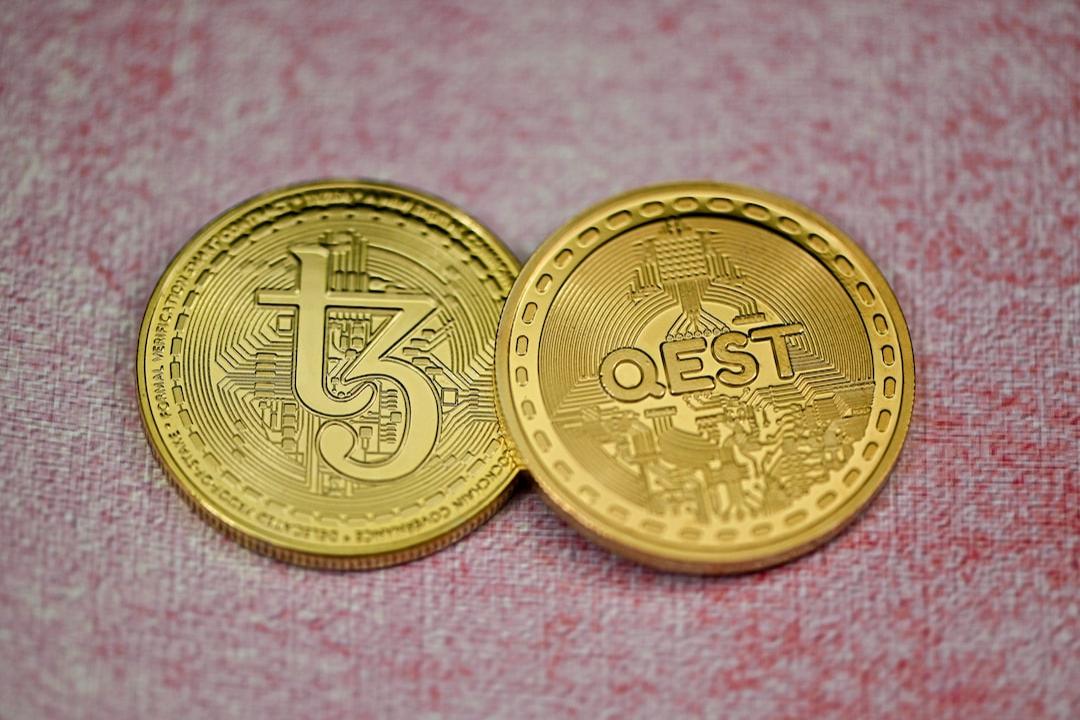Financial Empire BlackRock’s Crypto Ambitions
A piece of news stating that “BlackRock’s IBIT has attracted more funds this year than the world’s largest gold fund” coincided with Bitcoin’s return to $100,000 on May 8, capturing market attention.
Bitcoin ETFs have taken over the crypto community, making Wall Street an important buyer of Bitcoin, propelling this once-marginal asset to mainstream and regulatory acceptance, and becoming a crucial piece of BlackRock’s global financial landscape.
BlackRock, the world’s largest asset management company, manages assets up to $11.5 trillion. However, this “apparent asset management giant” has long surpassed the role of merely being an asset manager. Dubbed the “shadow central bank,” BlackRock is deeply involved in the formulation of global capital flows, shaping policy directions, and constructing systemic financial instruments.
From IBIT to BUIDL, BlackRock’s on-chain layout
In the order of traditional finance, BlackRock has long been a player controlling the rules of the game. Now, this financial giant is quietly establishing a value bridge between traditional capital and digital assets, attempting to reconstruct the future financial order.
One of the core unresolved issues in the crypto market over the past decade has been “when will the U.S. SEC approve a Bitcoin spot ETF.” In pursuit of this, dozens of institutions have made repeated attempts but faced numerous setbacks. Until June 2023, when BlackRock formally submitted its Bitcoin spot ETF application, it was not just a mere application but a catalyst for market confidence. The market quickly realized that with BlackRock backing Bitcoin, regulatory approval was merely a matter of time.
In January 2024, the SEC officially approved multiple Bitcoin spot ETFs, including BlackRock’s IBIT. This event not only became a “watershed moment for Bitcoin’s compliance” but also indicated a redistribution of narrative power: BlackRock introduced Bitcoin to the legitimate stage of mainstream finance through an ETF.
After its launch, IBIT quickly attracted massive institutional capital, ending Grayscale’s GBTC monopoly in Bitcoin exposure while surpassing the global largest gold ETF, GLD, in capital inflows.

According to public data, from the beginning of this year until now, IBIT has garnered approximately $6.97 billion in net inflows, surpassing GLD’s $6.29 billion during the same period. Despite Bitcoin’s price increase of only 1.4% and gold’s rise of 24.9%, capital has flowed into IBIT against the trend, reflecting the market’s high recognition of its long-term allocation value.
Bloomberg’s senior ETF analyst Eric Balchunas noted that the continuous capital inflow during a period of weak prices confirms Bitcoin’s asset allocation value as “digital gold,” predicting that the scale of BTC ETFs will reach three times that of gold ETFs within 3-5 years. Strategy Chairman Michael Saylor has boldly predicted that BlackRock’s IBIT will become the largest ETF in the world within ten years.
However, IBIT is merely the starting point in BlackRock’s bigger picture. Rather than promoting a single ETF, BlackRock is reshaping a new financial infrastructure centered on tokenization.

In March 2024, BlackRock launched the tokenized money market fund BUIDL, becoming its first fully on-chain traditional asset fund. By May 2025, BUIDL’s Total Value Locked (TVL) had surpassed $2.8 billion, firmly establishing itself as the leader in the global RWA space, far ahead of competitors like WisdomTree and Franklin Templeton. This indicates that BUIDL is no longer an experimental project but a market-validated reality.
Furthermore, BlackRock has recently applied to establish DLT Shares and announced the completion of on-chain mapping for $150 billion in assets, covering diverse fields such as real estate trusts and commodities. This case not only marks the commercialization and scaling stage of RWA but also transitions on-chain finance from marginal experimentation to an extension of traditional capital markets.
The Comeback of Wall Street’s Underdogs
Everything may trace back to an office in Manhattan in 1986.

That year, Larry Fink was a hotshot trader on Wall Street and the youngest managing director in First Boston’s history, leading the then-cutting-edge financial innovation—Collateralized Mortgage Obligations (CMOs). However, a miscalculation on an interest rate bet led to his firm losing over $100 million, plunging his career into a low point. This financial Waterloo sparked a deep reflection on risk management and sowed the seeds for BlackRock’s future rise.
Two years later, Larry Fink, alongside several former colleagues and with the support of Blackstone Group, founded BlackRock Financial Management, the precursor to BlackRock, starting with just $5 million in capital. Unlike the prevalent high-frequency trading and speculative arbitrage trends on Wall Street at the time, Larry Fink made risk management the core philosophy. This principle later became the underlying logic and moat for BlackRock’s sweeping success in the global asset management industry.
With profound insights into the fixed income market and innovative asset management models, BlackRock quickly rose to prominence. By the end of 1994, BlackRock’s assets under management (AUM) skyrocketed from $1.2 billion at inception to $53 billion, and in the same year, it officially spun off from Blackstone Group, rebranding itself as “BlackRock,” marking the beginning of its true global expansion.
BlackRock’s core moat was not just its capital scale but its groundbreaking financial risk analysis platform—the Aladdin system, regarded as the “super brain” of the global capital market. This risk control and asset allocation analysis platform executes over 5,000 portfolio stress tests daily and calculates 180 million options adjustments weekly, generating as much as $1.4 billion in revenue for BlackRock in 2022 alone.
More importantly, Aladdin has become a vital financial infrastructure globally, with over 200 major financial institutions, including UBS, Deutsche Bank, the Swiss National Bank, and even the Federal Reserve, using Aladdin for risk control and asset allocation management, serving assets exceeding $20 trillion, nearly equivalent to one-fifth of global GDP. In a sense, BlackRock’s influence has transcended the traditional role of an asset manager, becoming a “predictor” of global market sentiment and capital flows.
Moreover, through its ETF business, BlackRock has gained discourse power in global capital allocation. After the burst of the real estate bubble in 2008, the market urgently needed an investment tool with high transparency, low cost, and strong liquidity, and ETFs quickly became an essential choice for both institutional and retail investors seeking risk diversification and asset allocation efficiency. BlackRock subsequently acquired Barclays Global Investors for $13.5 billion in 2009, gaining the world’s largest index fund brand, iShares ETF.
ETFs are not merely passive investment tools; they are also channels for international capital allocation rights. Who gets included in the index can obtain liquidity, making BlackRock the rule-maker and referee in this global capital game. According to official disclosures, iShares ETF has reached an asset scale of $3.3 trillion, managing over 1,400 ETFs that almost cover all major global markets. Through ETFs, BlackRock has gradually permeated the shareholder structure of nearly every major publicly listed company in the U.S. Data from 2023 indicates that the three index fund giants, including BlackRock, are the largest single shareholders of over 90% of S&P 500 index companies, becoming the “invisible hand” in the equity structure of American companies.
“Revolving Door”: BlackRock’s Secret Weapon in Capital Games
What truly brought BlackRock into the global public eye was its role as a “behind-the-scenes central bank” during various financial crises. Particularly during the 2008 global financial crisis, as Lehman Brothers collapsed and AIG teetered on the brink of bankruptcy, the entire financial system was in jeopardy. The U.S. Treasury and the Federal Reserve urgently needed an external professional institution that understood asset pricing and could manage the clearing process. BlackRock took on this hot potato, assisting in the liquidation of bad assets and helping the Federal Reserve design the largest asset rescue plan in history, TARP.
Since then, BlackRock’s role has evolved from being merely a player in the market to becoming a bridge for policy execution. When the COVID-19 pandemic caused another global market crash in 2020, the Federal Reserve once again called upon this “old friend” and unprecedentedly intervened directly in the market through ETFs, with the execution of this action being carried out by BlackRock’s iShares series funds. This move has drawn criticism, with some deeming BlackRock’s relationship with the U.S. government as “too close.” It can be said that BlackRock is both a private giant in the market and a trusted policy execution tool for the government.
Behind this lies a more clandestine system: the revolving door between politics and business.
In the past, many of BlackRock’s senior executives took high-level positions in U.S. government agencies like the Treasury and the Federal Reserve after leaving the firm, while some officials who served in the U.S. government later joined BlackRock. This intertwining of political and business relationships often signifies a preemptive advantage under information asymmetry, providing BlackRock with unique advantages in its strategic layout on the global stage.
Today, BlackRock’s reach extends far beyond the financial sector. In recent years, it has continued to expand into energy, data, healthcare, logistics, and even ports—vital economic arteries. Recently, BlackRock also planned to acquire 43 port projects owned by Li Ka-shing’s CK Hutchison for $22.8 billion. If the deal is completed, BlackRock will become one of the actual controllers of the world’s largest port network, involving over 100 critical nodes, thus having a more profound influence on the global economy’s operation. According to the Wall Street Journal, such transactions have even received tacit approval or support from the U.S. government. In other words, BlackRock is no longer just a market participant but an executor of major power games.
The story of BlackRock is not just a success story on Wall Street; it is a real-world textbook on how capital permeates power, shapes market rules, and influences the future in the era of globalization. It does not create news but establishes rules; it does not directly govern but affects fiscal policy; it does not own companies but is the largest shareholder behind nearly all companies. The existence of this invisible giant has already permeated every corner of our lives.
Due to its high sensitivity to global financial currents and systemic influence, BlackRock was among the first to perceive the structural changes brought about by crypto assets. “If the U.S. cannot control the ever-expanding debt and fiscal deficit, the dollar’s decades-long status as the ‘global reserve currency’ may ultimately yield to emerging digital assets like Bitcoin,” BlackRock CEO Larry Fink stated candidly in his 27-page annual letter to investors in 2025, mentioning that tokenization is becoming a key force in reshaping financial infrastructure. If SWIFT is postal service, then tokenization is the email itself—assets can circulate directly and instantaneously, bypassing all intermediaries. Tokenization will democratize investment and returns. This may not be a bold vision from this CEO but a calm judgment of the future financial sovereignty landscape.
In the on-chain world, what BlackRock seeks to dominate is not just liquidity but also the formulation of standards, the construction of infrastructure, and the integration of regulation. As history has consistently demonstrated, BlackRock’s intention has never been limited to “how much assets to invest,” but rather whether it can set the rules for the next generation of finance.
This article is a collaborative reprint from: PANews

